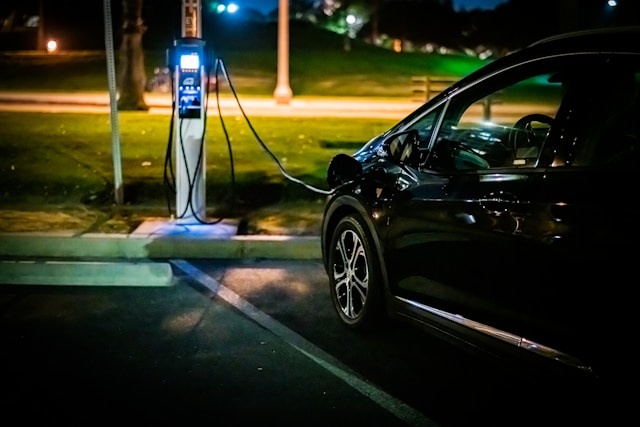The global automotive landscape is undergoing a profound transformation, driven by technological innovation, climate concerns, and shifting consumer preferences. At the center of this revolution are electric vehicles (EVs)—machines that no longer rely on internal combustion engines but on electricity stored in high-performance batteries. This transition isn’t just about new types of cars; it’s about reshaping transportation as we know it.
In recent years, the demand for electric vehicles has surged dramatically, fueled by government incentives, improvements in battery technology, and a growing societal push for sustainability. Once considered a niche market, EVs are now on track to dominate future transportation. The rapid pace of this evolution raises several questions: How did we get here? What are the technological, economic, and environmental implications? And what lies ahead?
In this post, we’ll dive deep into the world of electric vehicles, tracing their history, evaluating their current impact, and forecasting their future trajectory. Whether you’re a casual driver, a tech enthusiast, or an investor, understanding the scope and significance of electric vehicles is crucial.
A Historical Overview: From Curiosity to Mainstream
The Early Electric Carriages
Electric vehicles are not a modern invention. In fact, their roots can be traced back to the early 1800s when inventors in Hungary, the Netherlands, and the United States began experimenting with battery-powered vehicles. By the late 19th century, electric vehicles had gained some popularity, especially among urban elites who appreciated their quiet and clean operation compared to noisy, polluting gasoline-powered cars.
In the early 1900s, nearly one-third of vehicles on American roads were electric. However, with the mass production of gasoline cars like the Ford Model T and the discovery of vast petroleum reserves, electric vehicles faded into obscurity.
Dormancy and Rebirth
Throughout the mid-20th century, EVs remained largely dormant. It wasn’t until the 1970s oil crisis that interest was briefly rekindled. However, due to limited battery technology and poor performance, electric vehicles still couldn’t compete with their gasoline counterparts.
It wasn’t until the 21st century—thanks to advances in lithium-ion battery technology, growing environmental concerns, and ambitious entrepreneurs—that EVs began their real comeback. Tesla’s Roadster (2008) broke the mold by showing that electric vehicles could be both fast and luxurious, paving the way for a renaissance.
The Current State of Electric Vehicles
Adoption Rates Around the World
Today, electric vehicles are no longer a rarity. Countries like Norway, China, and the Netherlands are leading the charge, with EVs accounting for over 50% of new car sales in some regions. China has emerged as both the largest producer and consumer of EVs, supported by government subsidies and a robust domestic supply chain.
The United States is also experiencing rapid growth in EV adoption. Automakers such as Ford, General Motors, and Rivian are investing billions to catch up with early leaders like Tesla. Europe, meanwhile, has embraced EVs due to stringent emissions regulations and urban sustainability goals.
Market Segmentation
The electric vehicle market is now segmented across several categories: economy models like the Nissan Leaf and Chevrolet Bolt, premium sedans like the Tesla Model S and Lucid Air, and SUVs and trucks like the Rivian R1T and Ford F-150 Lightning. This variety is crucial in ensuring that EVs appeal to a broad range of consumers, not just early adopters.
Fleet electrification is another fast-growing sector. From Amazon’s delivery vans to New York City’s electric taxis, fleets are shifting to electric as part of broader sustainability strategies. Even public transportation systems are integrating electric buses, especially in urban centers.
The Technology Behind Electric Vehicles

Battery Systems and Innovation
At the heart of any electric vehicle lies its battery. The performance, range, and safety of EVs are largely determined by the type and quality of the battery pack. Currently, lithium-ion batteries dominate the market due to their high energy density and efficiency.
However, challenges remain. Battery degradation, range limitations, and charging times are still hurdles for mass adoption. Fortunately, massive investments in R&D are yielding breakthroughs. Solid-state batteries, for example, promise faster charging, longer lifespans, and improved safety.
Battery recycling and second-life applications are also evolving rapidly. As millions of batteries reach the end of their automotive life, companies are repurposing them for home energy storage or developing efficient recycling technologies to recover valuable materials.
Software and AI Integration
Modern electric vehicles are essentially computers on wheels. Advanced software controls everything from energy management to autonomous driving capabilities. Tesla’s Autopilot and Full Self-Driving features demonstrate how software can turn a simple car into a high-tech platform.
Artificial intelligence (AI) is also playing a key role in route optimization, battery health monitoring, and adaptive performance tuning. As over-the-air updates become more common, electric vehicles will continue to improve over time—something internal combustion vehicles could never offer.
Charging Infrastructure: The Lifeblood of Electric Vehicles
Public and Private Charging Networks
One of the biggest challenges facing electric vehicle adoption is the availability and reliability of charging infrastructure. While home charging works well for many users, long-distance travel and urban environments require robust public networks.
Companies like ChargePoint, Electrify America, and Tesla are expanding fast-charging stations across North America and Europe. Meanwhile, governments are investing in public infrastructure to ensure equitable access. Some cities are even integrating EV chargers into streetlights and parking meters.
Workplace charging is another important aspect, enabling employees to top up their batteries during work hours. This increases convenience and accelerates adoption by reducing “range anxiety.”
Fast Charging and Battery Swapping
Fast charging technology has advanced significantly. Today’s DC fast chargers can add up to 200 miles of range in just 15-30 minutes, depending on the vehicle and charger type. Innovations such as ultra-fast 350kW chargers are being tested and deployed.
Battery swapping is another model gaining traction, especially in China. Companies like NIO allow drivers to exchange depleted batteries for fully charged ones in just a few minutes, offering an alternative to waiting at charging stations.

